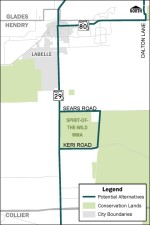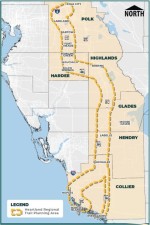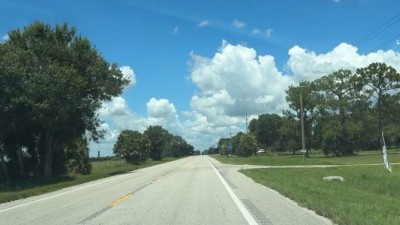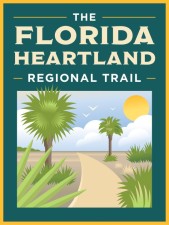455294-1 Florida Heartland Regional Trail - Hendry County
Project Details
Estimated Costs
| Construction Cost: | $TBD |
|---|
About
The Feasibility Study for the Hendry County segment of the Florida Heartland Regional Trail will evaluate the feasibility of constructing a multi-use trail along SR 29, SR 80, Keri Road (CR 832), Sears Road, and a north-south alignment along the edge of the Spirit-of-the-Wild Wildlife Management Area (WMA). The combined length of the potential routes is approximately 37.5 miles. Currently, there are intermittent or no existing designated bicycle lanes or sidewalks along these roadways. If completed, the project would provide a 12-foot wide multi-use trail allowing bicyclists and pedestrians to travel safely along various corridors while providing regional connectivity.
The preliminary routing alternatives or alignments, will be evaluated to determine potential social, cultural, natural, and physical environmental impacts and benefits, engineering constraints, and safety enhancements. The proposed trail passes through LaBelle providing potential connection to LaBelle Nature Park, LaBelle Heritage Museum, Barron Park, and Veterans Memorial Park. In addition, the study will evaluate more direct access to entry points for Spirit-of-the-Wild WMA, Okaloacoochee Slough WMA, Okaloacoochee Slough State Forest and Ortona Lock South Campground.
Public Involvement
Public involvement is an integral part of the Feasibility Study process. FDOT will engage interested parties in the study process and there will be opportunities for public comment, including a public information meeting. You may also submit comments or questions about this project at any time during the study, by using the "Send a Comment" button to the right.
If you are interested in being added to the mailing list to receive study information, please use the "Send a Comment" button to provide your information to the study team.
FAQs
What is a regionally significant trail?
The Florida Heartland Regional Trail has been identified and prioritized as a regionally significant trail by the Florida Greenways and Trails Council [Section 260.0142(4)(c), FS]. That means it is recognized for its potential to:
- Cross multiple counties
- Attract national and international visitors
- Provide opportunities for economic and ecotourism development
- Showcase the value of wildlife areas, ecology, and natural resources
- Serve as a main corridor for critical links and trail connectedness
What is a Feasibility Study?
A feasibility study considers potential social, economic, and environmental effects, as well as constructability and costs, to determine project viability. The study helps FDOT determine how the project will move forward to future phases. The starting point for the Florida Heartland Regional Trail’s feasibility studies will be the Collier to Polk Trail Master Plan’s preliminary routing alternatives. The basic activities of the Feasibility Study include:
Data Collection
The first major work effort is the collection of all available data pertaining to the study corridor including existing and planned infrastructure, existing and future land uses, drainage patterns, and environmental resources.
Alignment Development and Analysis
Once data collection is completed, various alignments are developed that meet the purpose and need of the project. These alignment alternatives are evaluated to identify potential impacts or constraints on the social, economic, natural, physical, and cultural environments. The development of preliminary cost estimates determination of the need for additional right-of-way for improvements, if applicable and public outreach will also be completed.
Feasibility Report
The Feasibility Study report will document results of public outreach efforts; development and evaluation of alignments; and the feasible Recommended Alignments that can proceed to the next phase for in depth analysis.
Why are multiple Feasibility Studies being conducted?
Because of the project’s extensive length, Feasibility Studies are being conducted for each county that is part of the Florida Heartland Regional Trail planning area: Collier, Hendry, Glades, Highlands, Hardee, and Polk (see map). Each study will follow its own schedule to evaluate the Master Plan’s preliminary alternatives, assess environmental impacts, and solicit public input. For general information, please visit the Florida Heartland Regional Trail project website at FloridaHeartlandRegionalTrail.com.
Contact Information
| PD&E Project Manager |
|---|
|
Kimberly Warren
863-808-0958
Kimberly.Warren@dot.state.fl.us
|
| For Media Inquiries Only |
|
fdot-d1comm@dot.state.fl.us
|




